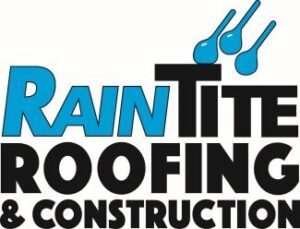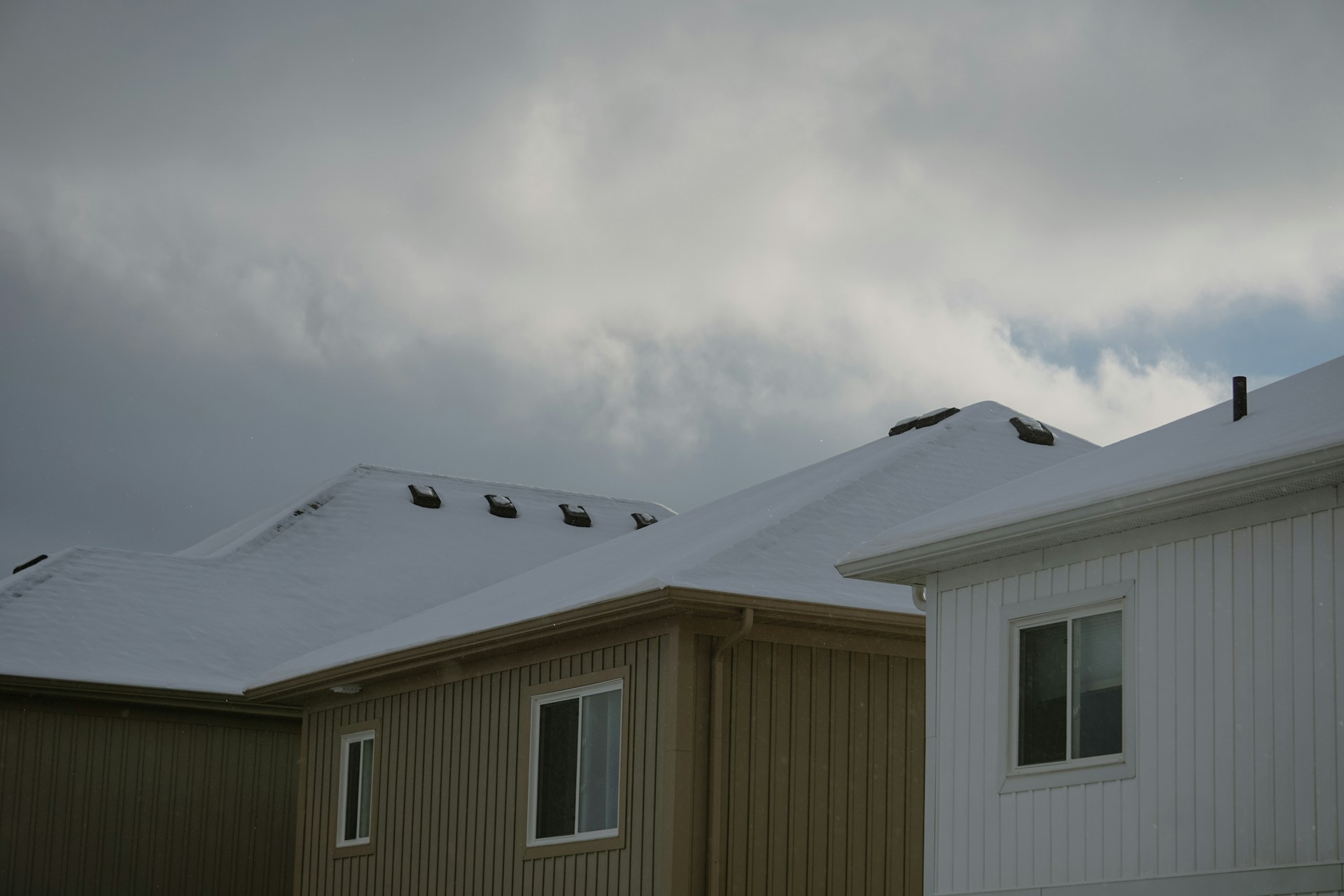When snow starts piling up in Rapid City, ice dams aren’t far behind. These frozen ridges might look harmless, but they can quietly ruin your roof, walls, and ceilings if ignored. As winter ramps up, it’s smart for homeowners to understand how these icy build-ups form and what can be done to stop them. Keeping your roof protected through the cold months doesn’t just prevent water damage, it helps avoid costly repairs down the road.
Many homeowners assume snow on the roof is just part of living in South Dakota. But when that snow melts unevenly, ice dams form, and that can spell trouble. The good news is that most of what causes them is preventable with the right steps. Knowing how they start and what conditions make them worse gives you a head start before problems strike.
Understanding Ice Dams
An ice dam forms when warm air from inside your home escapes into the attic, heats the underside of the roof, and melts some of the snow above. That melted snow runs toward the colder eaves and refreezes, building up into a ridge of ice. It might not seem like much at first, but more water continues to run into the dam, gets trapped, and starts seeping back under the roof materials. Before long, it can begin creeping into your home.
Rapid City’s unique weather adds fuel to this problem. Heavy snowfall is common, and the temperature swings are sharp—often freezing cold one day and warming up the next. That back-and-forth is the perfect recipe for ice dams. You might see icicles forming or water stains on walls or ceilings, signs that water has already started backing up.
Even the shape and construction of your roof can affect how likely ice dams are to form. Homes with poor attic insulation or outdated ventilation systems struggle most. Heat escapes instead of staying in your living space, creating those warm roof spots that cause uneven snow melt. Older homes in Rapid City are especially vulnerable if their insulation hasn’t been updated.
Preventive Measures to Stop Ice Dams
Stopping ice dams is possible with a few smart upgrades to how your attic and roof handle heat and moisture. It’s all about keeping the roof as uniformly cold as possible so melting doesn’t happen in patches. Here are some ways that works:
1. Insulate Your Attic Well
A properly insulated attic keeps your home’s heat where it belongs—down below. Less heat makes its way into the attic, which lowers the chances of snow melting unevenly across your roof.
2. Make Sure Your Attic Ventilation Works
Good ventilation draws out warm air that does sneak into the attic, keeping a more consistent temperature. Ridge vents and soffit vents need to be clear and working right so air can move freely.
3. Clear Your Gutters Regularly
Gutters filled with leaves or roof grit block water from flowing off the roof. That blockage lets cold runoff stay put and freeze along the roof’s edge, setting up a dam. Regular cleanouts prevent those risks.
4. Use Roof Heating Cables as a Backup Plan
Electric heating cables can be an extra layer of protection for trouble spots, especially roof valleys or porch overhangs. When installed properly, they melt narrow channels into the snow to allow water to escape before it refreezes.
5. Seal Attic Leaks
Leaks around ducts, pipes, light fixtures, and chimneys let heat rise into the attic. Sealing these keeps more heat in your living space and leads to better temperature control on the roof deck.
These steps can work together to keep your roof colder and regulate how snow melts and flows. But not every house is the same, so cookie-cutter fixes don’t always cut it. That’s where working with a professional roofer helps the most.
Professional Help from a Local Roofing Company
You can do all the right things and still see signs of ice dams forming. That’s when it becomes clear a deeper inspection is needed. A local residential roofing company like RainTite Roofing & Construction knows what to look for based on years of working on homes in Rapid City. We focus on lasting solutions that actually prevent ice dams from forming again rather than just addressing symptoms.
Our roofers know the insulation problems common in the area and how local roof styles affect air flow and snow shedding. Whether your home has a steep slope, older shingles, or a partially vented attic, we know the patterns that lead to ice buildup.
Here’s how we tackle a winter roof inspection:
– Measure attic insulation and verify correct coverage
– Test how air is moving in the attic space and vents
– Look for past water damage near the eaves or ceilings
– Check roof lines for thermal bridging or melt paths
– Inspect gutter and downspout performance
From there, we’ll come up with a targeted plan. This might involve increasing insulation, fixing vent setups, or installing heating cables where roof layout makes airflow improvement tricky. Every solution we build is based on your home’s layout and winter patterns in Rapid City, not a guess or one-size-fits-all fix.
Real Stories from Rapid City Homes
We’ve seen what ice dams can do firsthand. One Rapid City homeowner noticed brown stains along the ceiling of an upstairs bedroom following a wet snowstorm. At first, they figured it was indoor humidity. But the stains spread and paint started to bubble. By the time we got there, a thick dam had frozen across the back side of the roof, right above the bathroom vent outlet.
Our crew traced the problem to warm air pushing into the attic through that vent. It started to melt the snow directly above it while the colder roof edges stayed frozen. Once water pooled and began seeping through the layers, it had nowhere else to go but down. We sealed the vent leak, added localized insulation, and cleared roof areas where water had pooled. That homeowner caught a break—it could have turned into a full ceiling repair.
Another customer on the west side of town had large icicles forming on the north-facing eaves, year after year. They assumed it was just part of winter until water spilled down their interior walls behind the fridge. Our inspection showed inadequate attic ventilation and a worn patch of insulation. After correction, plus the installation of roof cables in key areas, the next winter came with no issues.
These situations happen more often than people think. When the snow looks packed and pretty, it’s easy to ignore the ice building underneath. But even a minor leak caused by an ice dam can lead to warped drywall, stained paint, and ruined insulation—problems that always cost more than a quick inspection and fix.
Keep Ice from Taking Over Your Roof
Ice dams don’t wait until cold weather is over to do damage. They usually start building when those first big snowfalls arrive and temperatures swing just enough to cause melt and refreeze cycles. Waiting too long makes it easier for water to sneak under shingles and start causing real interior damage.
Our team at RainTite Roofing & Construction understands what a winter in Rapid City demands. The best defense is a good inspection before snow and freezing temperatures become a daily forecast. By stopping ice dam problems before they start, you’ll save yourself from bigger repairs down the line—and keep your roof doing the job it was built for.
Whether you need advice, repair, or an inspection, making sure your roof is ready for winter is a top priority. If you’re looking for a trusted local residential roofing company that knows how to handle Rapid City winters, count on RainTite Roofing & Construction. We’re here to help protect your home from ice dams and roof damage before the cold sets in.

